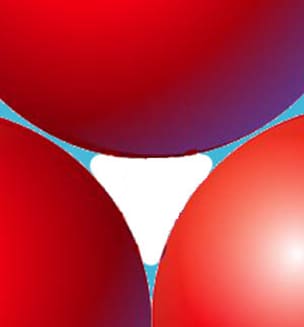Many beginning orchid growers fall into the common beginner trap of thinking that over-watering causes root rot. It doesn’t – not directly, anyway. Let me explain:
Unlike terrestrial plants, the vast majority of orchids do much of their gas exchange through their roots, rather than their leaves. That gives us the challenge of 1) providing enough water, while 2) still allowing plenty of air to the roots so that gas exchange isn’t stifled.
When we water an orchid, most of the liquid just pours right through the potting medium. Some of it is immediately absorbed by the roots and the medium, but some – called “bridging water” is held in-between the particles by surface tension, and that’s the issue.

If the mix is too fine, either due to small particles or because it is old and becoming too compact, that “bridging” water clogs up too much of the airflow, so the roots suffocate and die. In effect, the issue isn’t really “over-watering” as much as it is “under-airing”. This, by the way, is the origin of the myth that “orchid must dry out between waterings.” If you have a poor potting medium that traps a lot of water and risks suffocating the roots, letting it dry opens up those gas-exchange pathways so the roots can “breathe” again. While watering and waiting for the medium to dry can work, it really isn’t the best for the plant, so let me offer a better alternative: use a coarser potting medium and water it heavily and often. Big potting medium particles means there will be bigger spaces between them, so less bridging water.

A tip for preparing coarse media (especially bark): Before using it, put some in a colander or other freely-draining container and pour boiling (or at least very hot) water over it, wetting it completely. Wait 15 minutes or so, and do so again. The hot water causes the bark structure to soften and “open up” a bit, allowing it to absorb more water. That second wetting moves that process farther along and really saturates the bark. Once it is cool enough to handle, it’s ready to use.
If you did not do this in advance, and have newly-potted plants to deal with, try this instead: put the plant in the sink and really flood the potting medium with lukewarm water. Wait 15 minutes or so and repeat. Water again before the bark fully dries. If you do that for two or three waterings, the bark will have opened up enough to retain more water.